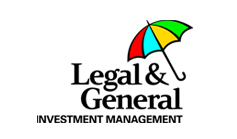
Global businesses are under constant pressure to drive ever higher performance. In such a demanding environment, Human Resources Directors must ensure they are uniting their local and regional teams by leveraging technology, putting more agile structures in place and establishing a common sense of purpose.
At Criticaleye’s Human Resources Director Retreat, held in association with Accenture, Resource Solutions and Workday, senior leaders and experts discussed the scale of change needed to make sure businesses are competitive and successful over the long term.
Rebecca Tully, Talent & Organisation Lead for UK & Ireland at Accenture, described the opportunities organisations must seize to reshape the workforce. “Some of the technology has leapfrogged the world of work. At home, you'll probably do more things by wearable tech and voice, whereas in the workplace, most things are still done on a desktop,” she said.
She also recognised that, while Boards rightfully prioritise discussions around carbon reduction and sustainability, they often treat the hybrid workplace as an entirely separate issue. Instead, HRDs should be highlighting where synergies can be made. “I think you need to put those two things together,” she advised. “Why don't we redesign this new species of workplace at the same time as driving all of those things?”
Rebecca continued: “Let's seize the day and do that right from the get-go, because otherwise, we're going to do a tonne of work and have a tonne of investment, but we’ll have to reinvent things again.”
Revisiting organisational design
Technology and digitalisation won’t be enough on their own. Organisations need the right structures to empower their teams to work efficiently, especially during periods of volatility and disruption. This can be an ongoing challenge.
“The old model of organisational change doesn’t work in today’s complex world of shifting geopolitics, cost inflation and soaring energy prices,” said Matthew Blagg, CEO of Criticaleye. “In the past, you worked on a five-year model and then once it was working, you started thinking about the next version.
“Now organisations must be evolving constantly. You’ll never get to a point when it is finished and perfect.”
Gurpreet Grewal, Regional Head of HR & Organisation for Asia at Generali, commented on how the global insurance and asset management provider has shifted its design approach. “Traditionally, Generali has been a decentralised model, as this acknowledges the personalised nature of insurance in each market,” she said. “However, lately, what we've been seeing is a strong swing towards functional alignment, especially within the corporate governance functions.”
The role of HR is critical during such a transformation, at both a regional and global level. “The biggest challenge is change management, because what is coming into the structure is matrix management,” Gurpreet said.
Setting Group Goals
While organisations need to create the right frameworks for an effective operation today, they also need to be thinking long-term, including preparing themselves for growth. For Helen Bradley, Executive Vice President for Group Human Resources at Bureau Veritas, that meant preserving the business’ decentralised model and aligning the workforce on the forward strategy.
“We've really consciously thought about, what I like to call, ‘the glue’,” she said. “It is a fine line. How do we continue to give the freedom and space to our colleagues locally and regionally to drive the business and deliver the people agenda? At the same time, what binds us together?”
Helen believes that creating an overarching purpose and a clear strategy is the ground upon which alignment, collaboration and success will follow. “We give common goals across the Group,” she explained. “Irrespective of the region that people are in, we're incentivising the whole of the executive committee and the organisation downwards on Group objectives that are aligned with the strategy. For example, we've put the achievement of some of our ESG objectives, at a Group level, into the reward targets.”
According to Helen, this can often be more effective than focusing on reporting lines and structures. “[It’s] better [to] work more on the strategy, vision and empowering the people to deliver it, rather than on tweaking the organisation design,” she said.
Ultimately, whether it’s digital adoption, new ways of working or uniting your team, it all comes down to great leadership. Helen said, “The coaching and facilitation role of the CHRO, and in the functions, is really important to create collaboration across geographical boundaries.”
Matthew suggested: “The real skill for organisations now is to be fluid. You must have the ability to adjust as things change. You can’t have a rigid view on anything, whether that's about your office set up or your approach to technology.”
If HRDs pair great leadership with being adaptable, then the rewards will be bountiful. Rebecca said: “We have to try and align our leadership to this concept of a new species of working. If we can do that, then we'll make brave choices about capital allocation, employee experience and all those things that will drive the right cultures, performance and productivity.”
Dylan Totton, Editorial Administrator, Criticaleye






 (002).png)

















